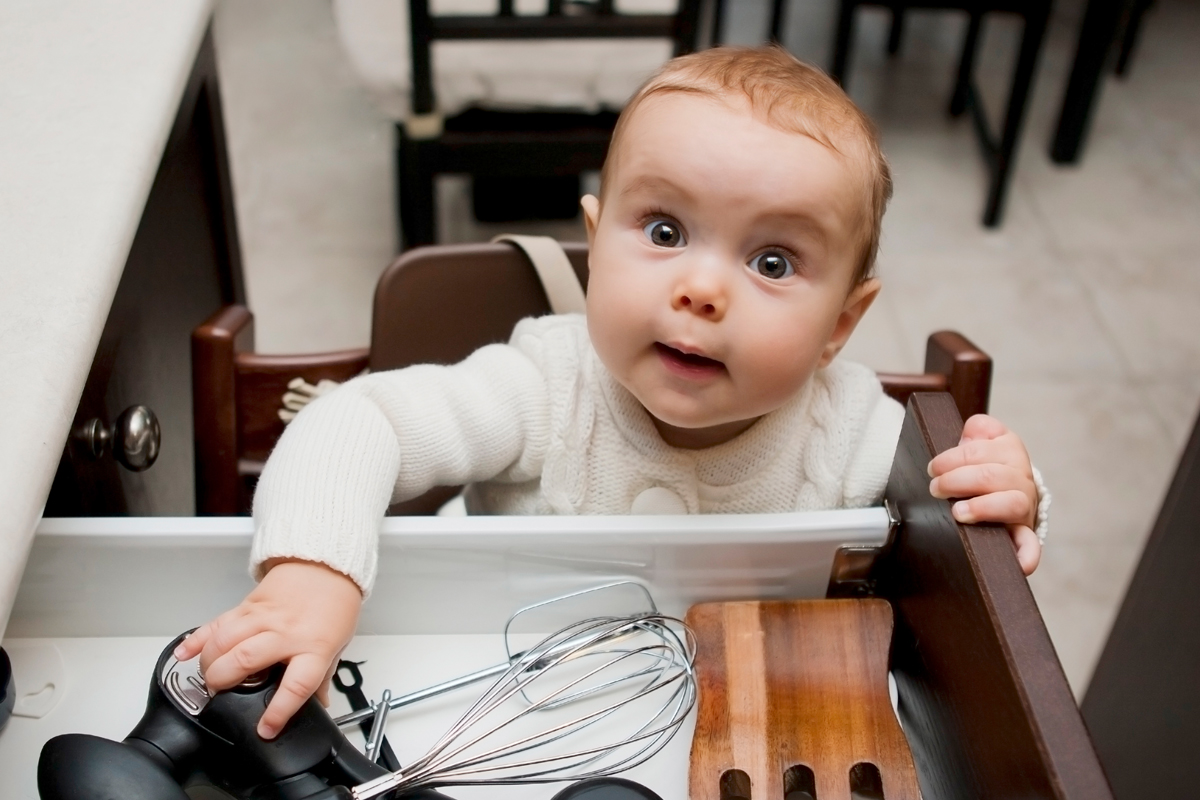When a young child begins actively exploring their surroundings, parents face a number of everyday challenges. To allow a child to explore safely, it’s important to anticipate potential hazards and ensure each room is childproofed.
Protecting Sharp Corners and Hard Surfaces
Young children can easily lose their balance and accidentally bump into hard surfaces or furniture corners.
Protective Pads
To prevent injuries, it’s essential to install protective pads on sharp corners of furniture, tables, and cabinets. These pads are made from soft materials, like silicone, and greatly soften impacts.
Fragile Items
It’s also advisable to remove glass, ceramic, or other fragile items from the child’s reach. Such objects should be stored on higher shelves and in cabinets that the child cannot open. Dangerous items, knives, scissors, and household chemicals should be kept out of reach of the little explorer.
Protection from Electricity and Cords
Outlets and cords pose a significant threat, so it’s essential to prevent accidental contact between a child and these items.
Socket Covers
Socket covers, which are widely available, are easy to install and prevent a child from inserting their fingers or objects into outlets. Choose covers with a safety mechanism so the child cannot remove them on their own.
Cords and Power Strips
Where possible, hide cords and power strips by securing them along walls or behind furniture. Dangling cords can attract a child’s attention, so they should be secured and kept out of reach for play. Power strips and surge protectors should be installed in areas that are difficult for the child to access or use models with additional child safety features.
Organizing a Child-Safe Kitchen
The kitchen is one of the most dangerous places for a child, so extra attention should be given to kitchen safety.
Stove Guard
The stove is a primary risk. To reduce the chance of burns, install a stove guard that blocks access to the burners. Place pots and pans on the back burners, with handles turned toward the wall, so the child cannot grab them.
Knives and Sharp Objects
Knives, scissors, and sharp objects should be stored in closed drawers or on upper shelves. Use locks on drawers and cabinets that contain household chemicals and dangerous items to prevent the child from opening them and accessing the contents.
Childproofing Windows and Balconies
Young children can easily climb onto windowsills, so it’s important to use window locks to prevent the child from opening them. Window locks are special mechanisms that prevent the window from opening fully.
On balconies, install protective barriers if there are gaps through which a child could fall. If possible, it’s best to temporarily restrict access to the balcony until the child grows older.
Baby Gates for Stairs and Hazardous Areas
If there are stairs in the home, it’s essential to install baby gates to prevent the child from climbing up or down on their own. Gates are also useful for limiting access to hazardous areas, like the kitchen or rooms with potentially dangerous items. These gates attach to walls or door frames and are easy for an adult to open, but inaccessible to a child.
Bathroom Safety and Wet Surfaces
The bathroom is another area that requires extra attention.
Floor Mats
Slippery floors can lead to falls, so use non-slip mats or special grips. Remember that the bathroom often contains cleaning chemicals, which should be stored on high shelves or in locked cabinets.
Water Faucets
Hot water taps are a burn risk. If possible, install temperature indicators or heat limiters on faucets to prevent accidental burns.
Protection from Small Objects
Small items pose a choking hazard, as a child may try to swallow them. Make sure that small objects, coins, buttons, small toys, or batteries are stored out of reach. Small items are best kept in containers with lids or in cabinets.
By following these simple guidelines, parents can create a safer environment for their child, allowing them to explore their home without the risk of injury.


